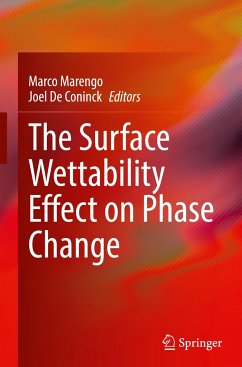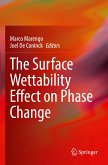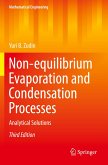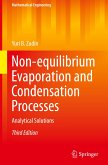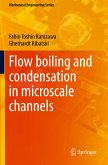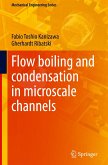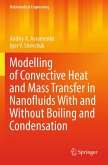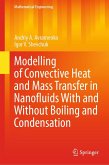The Surface Wettability Effect on Phase Change collects high level contributions from internationally recognised scientists in the field. It thoroughly explores surface wettability, with topics spanning from the physics of phase change, physics of nucleation, mesoscale modeling, analysis of phenomena such drop evaporation, boiling, local heat flux at triple line, Leidenfrost, dropwise condensation, heat transfer enhancement, freezing, icing.
All the topics are treated by discussing experimental results, mathematical modeling and numerical simulations. In particular, the numerical methods look at direct numerical simulations in the framework of VOF simulations, phase-field simulations and molecular dynamics. An introduction to equilibrium and non-equilibrium thermodynamics of phase change, wetting phenomena, liquid interfaces, numerical simulation of wetting phenomena and phase change is offered for readers who are less familiar in the field.
This book will beofinterest to researchers, academics, engineers, and postgraduate students working in the area of thermofluids, thermal management, and surface technology.
All the topics are treated by discussing experimental results, mathematical modeling and numerical simulations. In particular, the numerical methods look at direct numerical simulations in the framework of VOF simulations, phase-field simulations and molecular dynamics. An introduction to equilibrium and non-equilibrium thermodynamics of phase change, wetting phenomena, liquid interfaces, numerical simulation of wetting phenomena and phase change is offered for readers who are less familiar in the field.
This book will beofinterest to researchers, academics, engineers, and postgraduate students working in the area of thermofluids, thermal management, and surface technology.

